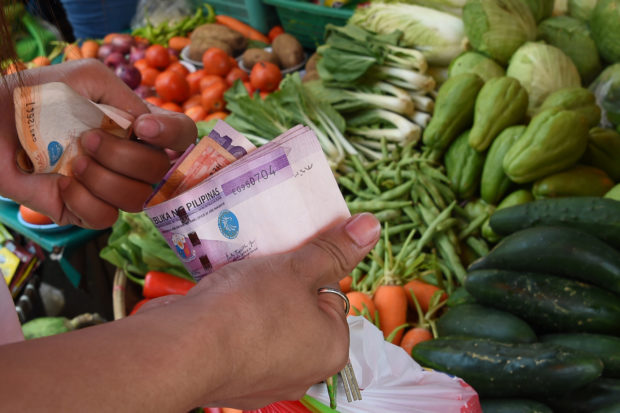MANILA, Philippines — While the slower inflation rate for the month of March translates to lower prices for many basic goods like food, the country must still navigate through risks that may upset the decreasing trend, according to Rep. Joey Salceda.
Salceda, an economist, on Wednesday (April 5) said that lower inflation numbers for March—7.6 percent as announced by the Philippine Statistics Authority (PSA) earlier—would allow the country to prepare for external economic shocks.
“Inflation levels going down in March gives us ample room to absorb potential shocks in the global monetary and financial environment,” said Salceda in a statement reacting to the latest PSA data.
“It also anchors inflation expectations, allowing businesses and consumers to make firmer decisions about their spending and investing activities this year,” he said.
“The good news is: Food is significantly cheaper this month compared to last month, with a month-on-month inflation rate of negative 1.2 percent,” Salceda said.
“Vegetables, in particular, are 14.1 percent cheaper this month compared to last month,” he said.
“Corn is also cheaper, albeit at a slower pace than food in general, at negative 0.7 percent MOM (month-on-month). Onion farm gate prices, in particular, have now hit the P50 range in many areas, as I predicted some weeks ago,” he added.
READ: Philippine inflation eased to 7.6% in March
But Salceda noted that while the livestock sector had shown signs of resiliency, the price of corn remained high, which would translate to higher livestock production costs — especially with the looming threat of El Niño, a prolonged dry spell which historically has a negative effect on crops.
“The livestock sector shows some resiliency, having among the lowest YOY (year-on-year) inflation rates among all food items, at 4.6 percent. MOM, inflation is negative, at -0.2 percent,” he said.
“Corn remains expensive, at 11.7 percent YOY inflation,” said Salceda.
“This will continue to have impacts on the price of meat, fish, processed food, and other key commodities. There are signs of downward momentum in prices, with MOM inflation being at negative 0.7 percent – but El Niño looms large as an upside risk to price,” he explained.
Further, the lawmaker, who heads the House of Representatives Committee on Ways and Means, said that prices of flour, seafood and sugar also remain high until now.
“Flour and bread remains expensive at 11.7 YOY inflation,” he said.
“Price issues in this area will persist as the Russia-Ukraine conflict continues,” Salceda said.
“Fish and seafood prices remain high at 9.9 percent. There is reason to believe that inflation in this area will be higher by April due to the Mindoro oil spill as well as the generally warmer climate,” he said.
“The sugar problem is structure. 35 percent YOY inflation when global sugar inflation levels are closer to 8.5 percent is an untenable situation for food and beverage manufacturing. If we continue to avoid difficult reforms in this area, we will continue to pay the price,” he added.
Earlier, the PSA said that inflation rates eased to 7.6 percent — lower than the 8.6 percent recorded last February. This means the country was able to sustain slower inflation growth, coming from January’s 8.7 percent.
READ: Philippines’ inflation slowed to 8.6% in Feb
March’s figures were slightly better than what analysts and the Bangko Sentral ng Pilipinas projected—8.0 percent and 7.8 percent.
Overall, Salceda said that he still believes that prices would decrease in or before October.
“That said, I sustain my observation that general price levels will continue to decline moving forward. We will hit BSP inflation targets by October, if not earlier. But the annual average price levels are likely to be above 5 percent for the full year 2023,” he added.
